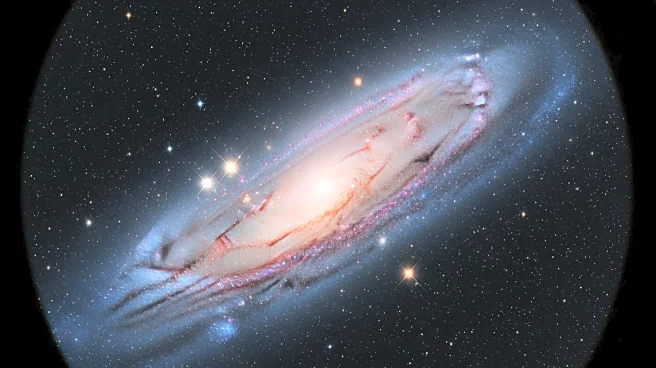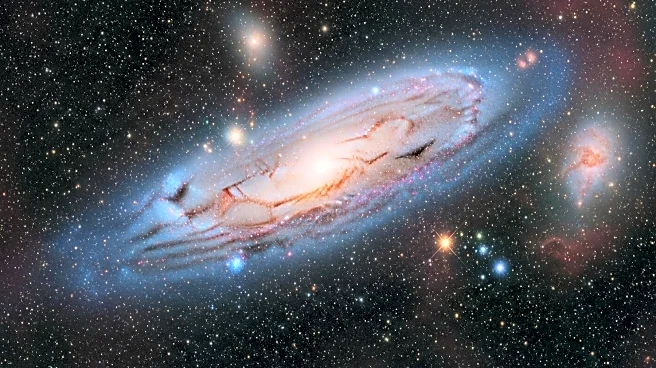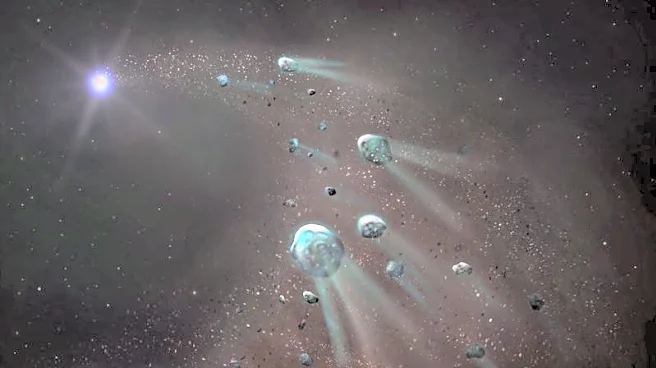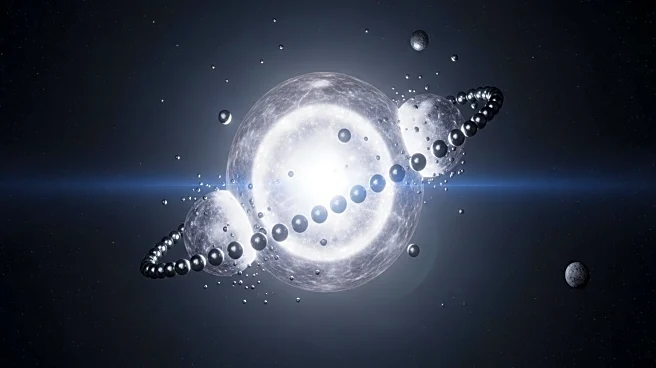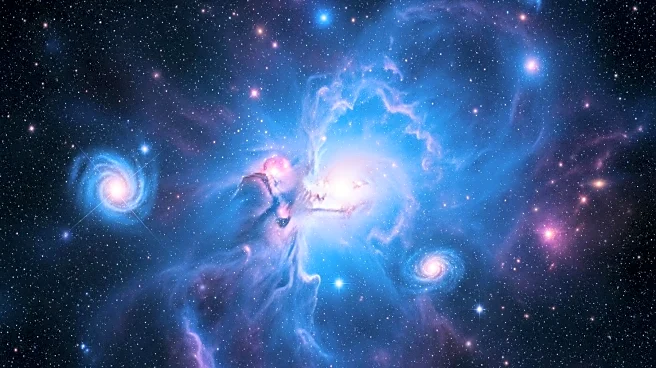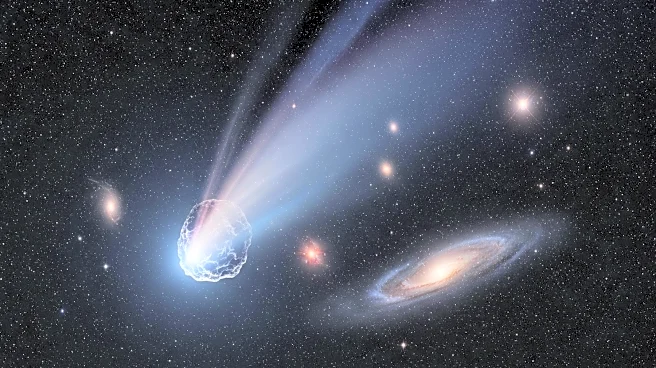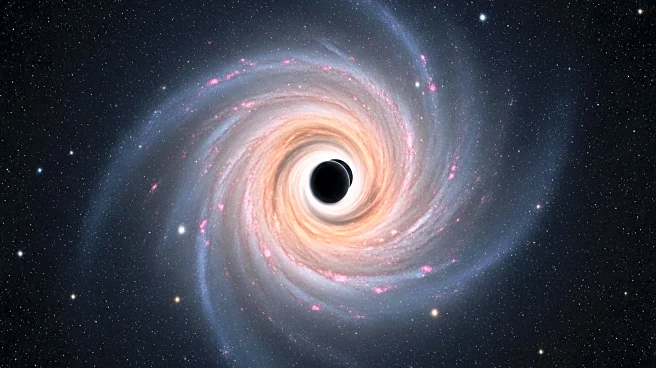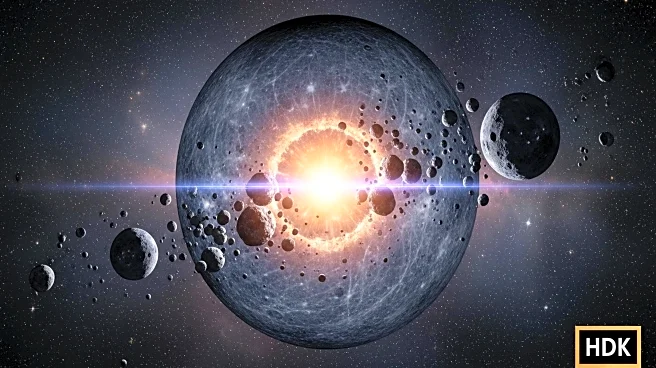What's Happening?
The Hubble Space Telescope has captured detailed images of the spiral galaxy NGC 7456, located 51 million light-years away in the constellation Grus. The images reveal patchy spiral arms and clumps of dark dust, with glowing pink regions indicating areas of star formation. These regions are rich in gas, where new stars are forming and illuminating the surrounding clouds. The Hubble program aims to study stellar activity, tracking new stars and star clusters to understand the galaxy's evolution. Additionally, ESA's XMM-Newton satellite has detected ultraluminous X-ray sources within the galaxy, which are compact objects emitting powerful X-rays. The galaxy's supermassive black hole region is also notably bright and energetic, contributing to NGC 7456's classification as an active galaxy.
Why It's Important?
The observations of NGC 7456 provide valuable insights into the processes of star formation and the dynamics of active galaxies. Understanding these phenomena is crucial for astronomers to piece together the life cycles of galaxies and the role of supermassive black holes in galactic evolution. The detection of ultraluminous X-ray sources adds to the knowledge of extreme cosmic objects, which can inform theories about the universe's most energetic events. These findings contribute to the broader field of astrophysics by enhancing the understanding of cosmic structures and their interactions.

